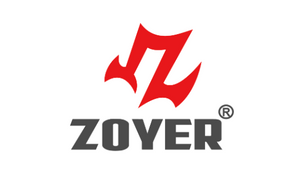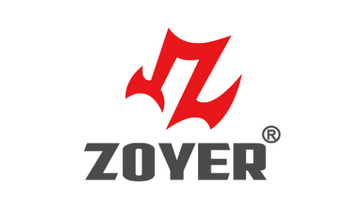How to Choose the Best Back Brace for Lower Back Pain: Expert Tips & Recommendations
May 19, 2025
You're Not Alone with Back Pain!
Let’s be honest—if you’ve landed on this page, you’re probably dealing with that nagging, frustrating, or even sharp pain in your lower back.
Whether it started after a long day at the desk, an intense workout, or it’s been building up for months, you’re definitely not alone.
In fact, lower back pain is one of the most common issues people face today. The good news?
There’s something you can do about it—and a great back brace might just be your new best friend.
Why Does Your Lower Back Hurt?
Lower back pain is incredibly common—chances are you've experienced it yourself. Maybe it's from sitting too long at work, lifting something heavy without thinking, slouching at your desk, playing sports, or simply aging.
Whatever the cause, lower back pain can seriously interfere with your daily activities and overall happiness.
Common Causes of Lower Back Pain
To tackle your pain effectively, let's first understand what's causing it:
-
Muscle or ligament strain: Usually from awkward movements or lifting something improperly
-
Bulging or ruptured discs: When discs between your vertebrae press on nerves, causing sharp pain
-
Arthritis: A common condition, especially as you age, leading to inflammation and stiffness
-
Poor posture: Habitually slouching or maintaining incorrect posture over time
-
Prolonged sitting: Spending hours sitting without adequate support
How Can a Back Brace Help?
Doctors and physiotherapists regularly recommend back braces because they:
-
Stabilize and support your lower back (lumbar spine)
-
Gently compress your muscles to reduce inflammation
-
Encourage proper posture by aligning your spine
-
Limit movements that could worsen your discomfort
An excellent everyday solution are the Zoyer Recovery Essential Back Brace and ZOYER Recovery Back Brace with Lumbar Support.
They're comfortable, breathable, and discreet enough to wear under clothing—making it perfect for office workers, busy parents, or fitness enthusiasts recovering from mild injuries or chronic discomfort
Understanding Different Types of Back Braces
There are different braces designed to meet various needs. Here's what you should know:
The 3 Main Types of Back Braces
| Type | Flexibility | Support Level | Best For |
|---|---|---|---|
| Flexible | High | Mild | Posture correction, daily wear |
| Semi-Rigid | Medium | Moderate | Chronic pain, herniated discs |
| Rigid | Low | High | Surgical recovery, spine instability |
Flexible Back Braces
These are perfect if your discomfort is mild or posture-related.
Made from soft materials like neoprene or elastic, they allow considerable movement while providing gentle support—great for daily wear or desk work.
Semi-Rigid Back Braces
Offering more structure and stronger support, semi-rigid braces include plastic supports or adjustable straps.
They’re excellent for moderate pain, herniated discs, or ongoing lower back issues.
The Zoyer Recovery Back Brace fits this category perfectly, with dual tension straps and reinforced panels for targeted support
Rigid Back Braces
For severe conditions or post-surgery recovery, rigid braces offer maximum immobilization, made from hard materials like molded plastic or metal.
They're typically prescribed for short-term therapeutic use under medical guidance.
Quick Comparison of Top-Rated Back Braces
Here's a simple guide to help you pick the best option quickly:
| Product | Key Features | Best For | Price |
|---|---|---|---|
| Zoyer Recovery Back Brace | Ergonomic fit, adjustable dual straps | Chronic pain, daily wear | $$ |
| Sparthos Back Brace | Breathable, vertical supports | Active lifestyle, moderate support | $$ |
| Mueller Adjustable Brace | Budget-friendly, steel support | Occasional use, general strain | $ |
While each brace has unique strengths, the Zoyer Recovery Back Brace stands out for everyday comfort and effective support.
What Should You Consider When Choosing a Back Brace?
Finding the right brace isn't just about popularity—it’s about fitting your unique lifestyle and pain level. Here's what matters most:
| Consideration | What to Look For |
|---|---|
| Back Condition | Muscle strain, disc issues, surgery recovery |
| Lifestyle & Activity | Sedentary, athletic, work-based, daily movement |
| Adjustability | Dual straps, multiple sizes, ergonomic design |
| Material & Comfort | Breathable, hypoallergenic, moisture-wicking fabrics |
| Intended Duration | Short-term recovery or long-term daily support |
Tips for Proper Use and Maintenance
Buying the right brace is just step one. Here’s how to maximize its effectiveness:
-
Daily Usage: Follow recommended wear times—generally, 2-6 hours daily depending on your condition
-
Correct Positioning: Secure the brace comfortably around your lumbar area, adjusting snugly without restricting breathing
-
Cleaning: Hand wash gently and air dry flat to maintain shape and elasticity
-
When to Replace: Check regularly for wear, including elasticity loss or frayed straps
How to Improve Lower Back Pain Beyond Braces
Here are additional practical tips to complement brace usage:
-
Strengthening and Stretching: Try yoga or core exercises to support your spine
-
Maintain Good Posture: Adjust your workspace ergonomically and take regular breaks from prolonged sitting
Take Control of Your Back Pain
Lower back pain can significantly disrupt your life—but choosing the right brace can provide immediate relief, better posture, and long-term support. Remember:
-
Identify the cause and severity of your pain
-
Select a brace designed for your daily activities and comfort
-
Follow proper usage guidelines for best results
A Final Thought: Your Lower Back Supports Your Entire Life
From your workspace to family time, don’t let back pain limit you. Zoyer back braces are trusted solutions designed to keep you moving comfortably every day. Ready to take control of your back pain?
Discover Relief Today with Zoyer Recovery Essential Back Brace—Click Here to Shop!

